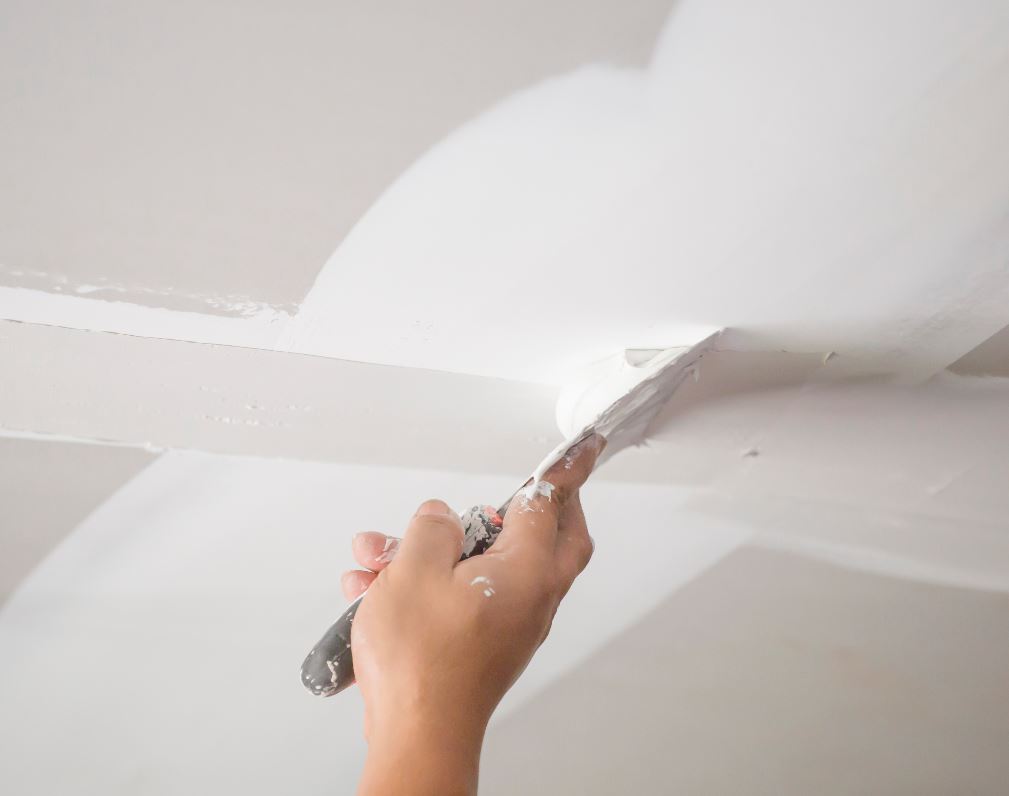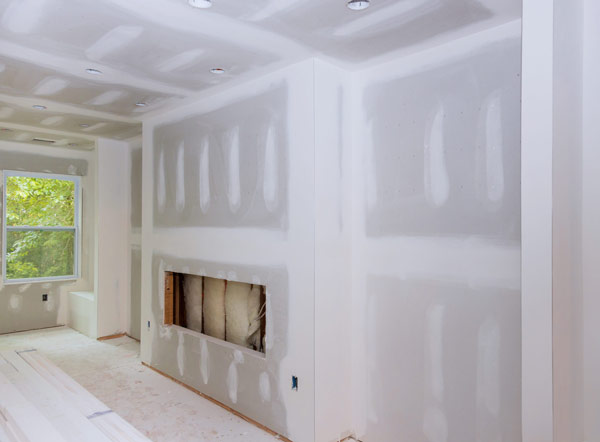Drywall contractors provide precision that elevates every Interior Painting project.
Wiki Article
Crucial Tips for Effective Drywall Repair Work and Setup Strategies
Efficient drywall repair and installation needs a mindful method. Understanding the sorts of drywall and having the right tools is vital. Accurate dimensions and correct methods can greatly affect the outcome. Numerous neglect important actions like taping and fining sand, which can make or damage the final appearance. As projects advance, common challenges may arise that require focus. Exploring these tips can result in a much more effective and polished coating.Comprehending Different Kinds of Drywall
Recognizing the different kinds of drywall is crucial for any type of successful repair service or installment task. Drywall, frequently known as plaster board, can be found in a number of varieties customized for specific applications. Standard drywall is the most commonly made use of type, ideal for basic interior walls and ceilings. Moisture-resistant drywall, often eco-friendly in shade, is developed for areas vulnerable to humidity, such as cooking areas and restrooms. Fire-resistant drywall, normally colored pink or purple, is engineered to stand up to greater temperature levels and is commonly used in garages or near heaters. Additionally, soundproof drywall helps in reducing sound transmission, making it suitable for multi-family homes or tape-recording studios. Specialty drywall, like cement board, is utilized in wet locations like showers or bathtub borders. Comprehending these kinds helps in choosing the appropriate material for every job, guaranteeing longevity and efficiency out of commission or brand-new setups.Vital Tools for Drywall Repair and Installation
Having the right devices is vital for effective drywall repair work and installment. A top quality utility knife is crucial for reducing drywall sheets exactly. A drywall T-square aids guarantee straight sides, while a taping blade is required for applying joint compound smoothly over seams. In addition, a drywall saw permits eliminating damaged areas or fitting drywall around components.For hanging drywall, a power drill with drywall screws is essential, as it makes it possible for protected and quick installment. A degree is also vital to confirm that the drywall is straight and correctly straightened. A sanding block or pole sander is important for smoothing out joint compound once it has actually dried out. Lastly, a measuring tape is essential for exact dimensions, stopping waste and guaranteeing a correct fit. Outfitted with these devices, individuals can tackle drywall projects effectively, resulting in professional-looking results.
Step-by-Step Guide to Fixing Holes and Cracks
When resolving holes and fractures in drywall, having the right devices and products is necessary for a successful repair work. This overview outlines the needed products and offers a clear, step-by-step procedure to efficiently bring back the surface. Comprehending these elements will help ensure a seamless surface and durable outcomes.Tools and Products Needed
A fully equipped toolkit is important for reliable drywall repair work and setup. Secret devices consist of an energy blade for reducing drywall, a measuring tape to ensure accurate sizing, and a drywall saw for larger holes. A putty blade is essential for applying joint compound efficiently, while a sanding block or post sander assists attain a smooth coating. For patching, a roll of fiberglass mesh tape or paper tape is necessary to strengthen joints. In addition, a drill and screws are needed for protecting new drywall pieces. Vital products include joint substance, guide, and paint to finish the repair work. Having these devices and products available guarantees a smoother, a lot more reliable repair service procedure, producing professional-looking results.Repair Service Refine Actions
Repairing openings and splits in drywall requires a methodical technique to guarantee a seamless finish. First, the area bordering the damages should be cleansed thoroughly to get rid of dust and particles. Next off, for little cracks, a putty knife is utilized to apply a joint substance equally over the location. For larger openings, a patch is necessary; the damaged section is removed, and a new piece of drywall is suited location, protected with screws. When the like it spot is in position, joint compound is related to mix the edges. After drying out, sanding the area smooth is essential. Finally, the repaired surface area should be primed and repainted to match the bordering wall, making sure an inconspicuous fixing.Techniques for Installing Drywall Panels
Setting up drywall panels calls for mindful preparation and accurate execution to guarantee a professional and smooth finish. It is crucial to measure the wall room accurately and cut the panels to fit, ensuring that they align with the studs. Placing the panels flat is usually advised, as this can boost the structural stability and lower the variety of joints.Utilizing drywall screws, installers need to secure the panels every 16 inches along the studs, making certain a firm hold. It is essential to stay clear of overdriving the screws, which can harm the paper surface area. For edges and corners, making use of an utility blade permits for clean cuts and a tight fit.

Completing Touches: Taping, Mudding, and Sanding
As soon as the drywall panels are firmly in place, the following important step entails the finishing touches of taping, mudding, and sanding. Insulation is essential for producing a smooth shift between panels and hiding joints. A high quality drywall tape, either paper or fiberglass harmonize, ought to be used over the seams, ensuring it sticks appropriately to the mud that will certainly be applied following.Mudding, or using joint compound, complies with the taping process. This substance loads spaces and ravel the surface. A very first coat should be used kindly, feathering the edges to blend with the drywall. After the initial coat dries, succeeding layers might be required for a perfect finish.
Sanding is required to achieve a smooth surface area. A fine-grit sandpaper should be utilized to delicately smooth out any kind of blemishes. Treatment ought to be required to stay clear of over-sanding, which can harm the drywall - drywall contractors. Effectively performed, these completing touches produce an expert look prepared for painting
Tips for Keeping Your Drywall After Installment
Keeping drywall after installation is important to protecting its look and structural integrity. Normal cleansing is essential; dirt and dirt can gather, so mild cleaning with a damp fabric is recommended. House owners must additionally examine for any type of indications of moisture or mold, especially in high-humidity locations like bathrooms and cooking areas. If any type of damages takes place, it's vital to address it promptly to stop further issues.Utilizing furniture pads can aid prevent scratches or damages from hefty items. In addition, painting the drywall with a top try this out quality, cleanable paint offers an extra layer of defense and makes future cleaning easier. Prevent making use of rough cleansers or tools, as these can harm the surface. Ultimately, preserving a steady indoor climate with suitable moisture degrees will aid stop fracturing or buckling with time. By complying with these ideas, one can assure that drywall remains in outstanding problem for years ahead.
Frequently Asked Questions
For How Long Does Drywall Require To Completely Dry After Installment?

Can I Mount Drywall Over Existing Drywall?
Yes, drywall can be installed over existing drywall, yet it is vital to guarantee the underlying surface is protected and properly prepared. This method can improve insulation and reduce installment time, though it may include weight.What Is the most effective Way to Soundproof Drywall?
The best method to soundproof drywall involves making use of specialized soundproofing materials, such as durable networks, acoustic caulk, and sound-dampening drywall. These strategies successfully reduce sound transmission in between rooms, improving total acoustic efficiency in living areas.Just how Do I Select the Right Drywall Thickness?
To select the best drywall thickness, take into consideration the application and location. Requirement residential walls usually utilize 1/2 inch, while ceilings or specialized locations might call for 5/8 inch for added strength and soundproofing capacities.Are There Eco-Friendly Drywall Options Available?
Yes, eco-friendly drywall alternatives are available. These include products made from recycled products, gypsum boards with low unpredictable organic substances (VOCs), and those making use of lasting manufacturing procedures, providing environmentally-conscious selections for building and construction and renovation tasks.Having the right devices is vital for reliable drywall repair service and setup. For hanging drywall, a power drill with drywall screws is indispensable, as it allows fast and protected installment. Key devices consist of an utility blade for cutting drywall, a tape measure to ensure precise sizing, and a drywall saw for bigger openings. Yes, drywall can be mounted over existing drywall, yet it is essential to ensure the underlying surface area is safe and secure and sufficiently prepared. The best way to soundproof drywall entails my sources using specialized soundproofing materials, such as resilient networks, acoustic caulk, and sound-dampening drywall.
Report this wiki page